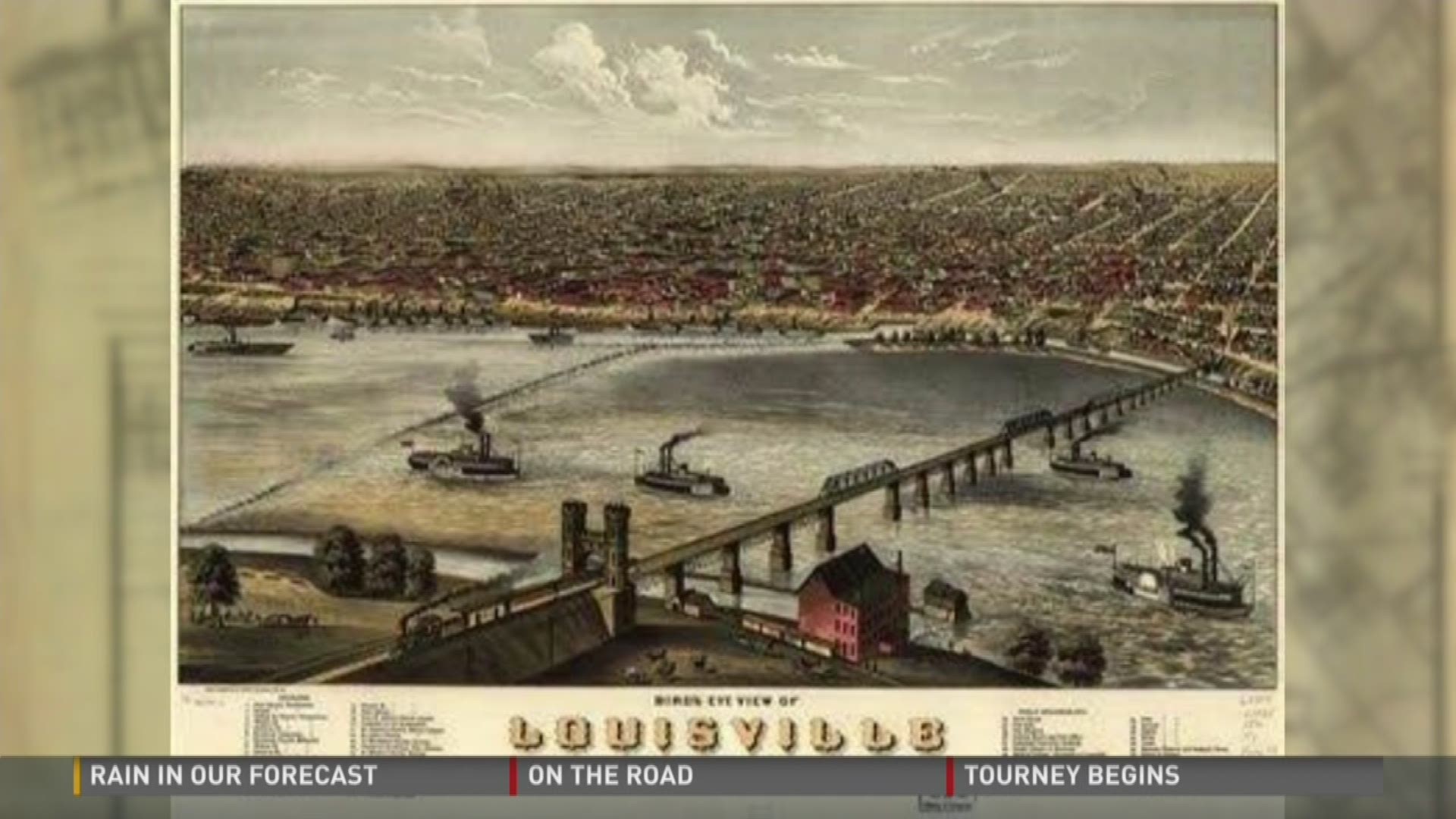LOUISVILLE, Ky. (WHAS11) -- The Civil War is underway, the year is 1861. The City of Louisville is a union town. The union flag, the American flag, is flying across the city and on steamboats.
But at the same time, there's also a chance you would hear the theme of the Confederacy in the falls city.
Despite a visible Union allegiance, the city remains one major contradiction, described this way by President of Simmons College Reverend Kevin Cosby, “It was schizophrenic and ambivalent as it relates to its position.”
Historian Keith Runyon points out, “We made both union and confederate uniforms here. We have the main factory. They went north and they went south.”
Jim Holmberg of the Filson Historical Society said we were split, “We were a union town with an underlying level of support for the confederacy.”
Author and historian Brian Bush uncovered this bit of history, “Reports of confederate soldiers walking down the streets in uniform, talking to other union soldiers. It's just weird.”
We asked these historians and Sam Watkins, who focuses on the city’s African American heritage, about our city's twisted embrace of both sides during and after the war in an effort to learn why a confederate statue seems to be appear out of nowhere near downtown.
Bush points to a wild scene on Main Street, “Even though we were neutral, on one side of the street you had someone screaming come join the Union, on the other side of the street saying come join the Confederacy.”
Our history has been unearthed again with the debate over removing the statue. It was placed in its current spot 30 years after the end of war, at what was the end of 3rd street, with wilderness around it.
We asked Holmberg of the Filson is there was any opposition in a once union town. He says, “There's never a voice against the monument that’s raised, in fact the newspapers at the time say union veterans, federal supporters, are on board with us.”
The war was fought for state's rights but at its root was slavery. Louisville's position on the river and the Falls of the Ohio, meant one thing, despite being a pro union town. Runyon paints a picture, “For everything good you can say about Louisville in 1860 and 1861, it was still one of the nation's centers for the slave trade.”
Another stunning twist: at the same time there were 450 free-black households in Louisville. One man, a black barber, owned 25-thousand dollars in real estate and had 960-dollars in cash.
Kentucky did not prohibit education to blacks. Free blacks were also teachers.
Unreal scenes played out here. The union's superstars, the commanding generals Ulysses S. Grant and William
Sherman met at the Galt House often. But, as Bush describes, the two men, who would help end slavery, were powerless in Louisville, “They could literally open up the shades of the Galt House and look across the street and see the slave pens.”
Why? Kentucky declared it was a neutral state and Lincoln's Emancipation Proclamation had no jurisdiction here.
Sam Watkins said, “Very tricky, very dangerous, very odd time for blacks in Kentucky and Louisville as a city.”
Louisville wasn't torched, it wasn't wrecked like other cities said Bush. “We were unaffected by the civil war. We didn't have these massive armies marching and destroying the city.”
But the union leadership never trusted the city's residents according to Holmberg, “If you were a confederate sympathizer you better be careful what you say and keep your mouth closed or you might find yourself arrested.”
The union's harsh treatment led Kentucky and Louisville to secede after the Civil War and support the Confederacy, and says Holmberg, “Within 5 to 10 years the confederates are running the city and state.”
Bush reports, “I mean look at our Governor after the Civil War. Simon Boulevard Buckner. He’s
an ex-confederate general.”
With no allegiance to that leadership, African Americans in Louisville charted their own destiny says Cosby, “Simmons College of Kentucky was born four months after Lee surrendered to Grant at the Appomattox Courthouse.”
But once again a paradox, 90 years before Rosa Parks refused to give her seat to a white passenger on a Montgomery, Alabama bus, Federal Judge Bland Ballard in Louisville made a trailblazing ruling right as the civil war ended says Bush, “A woman in Louisville wanted to sit where she wanted to and he said yes she had that right.”
In the 1950s' leaders like popular Mayor Charles Farnsley supported the Confederacy and the statue, but ironically were civil rights trailblazers, recalls Keith Runyon, “He integrated the libraries as mayor; he integrated the University of Louisville; he integrated the public swimming pools as mayor.”
A progressive city in many ways, but one now embracing “the lost cause”.
Our history explains the atmosphere behind how a women's group supporting the confederacy got the statue built.
Holmberg explains how easy it was, “The parks commissioner recommended it, the city supported it, and the board of public works supported it.”
Remarks Cosby, “While the confederates lost the war, they won the cultural war.”

